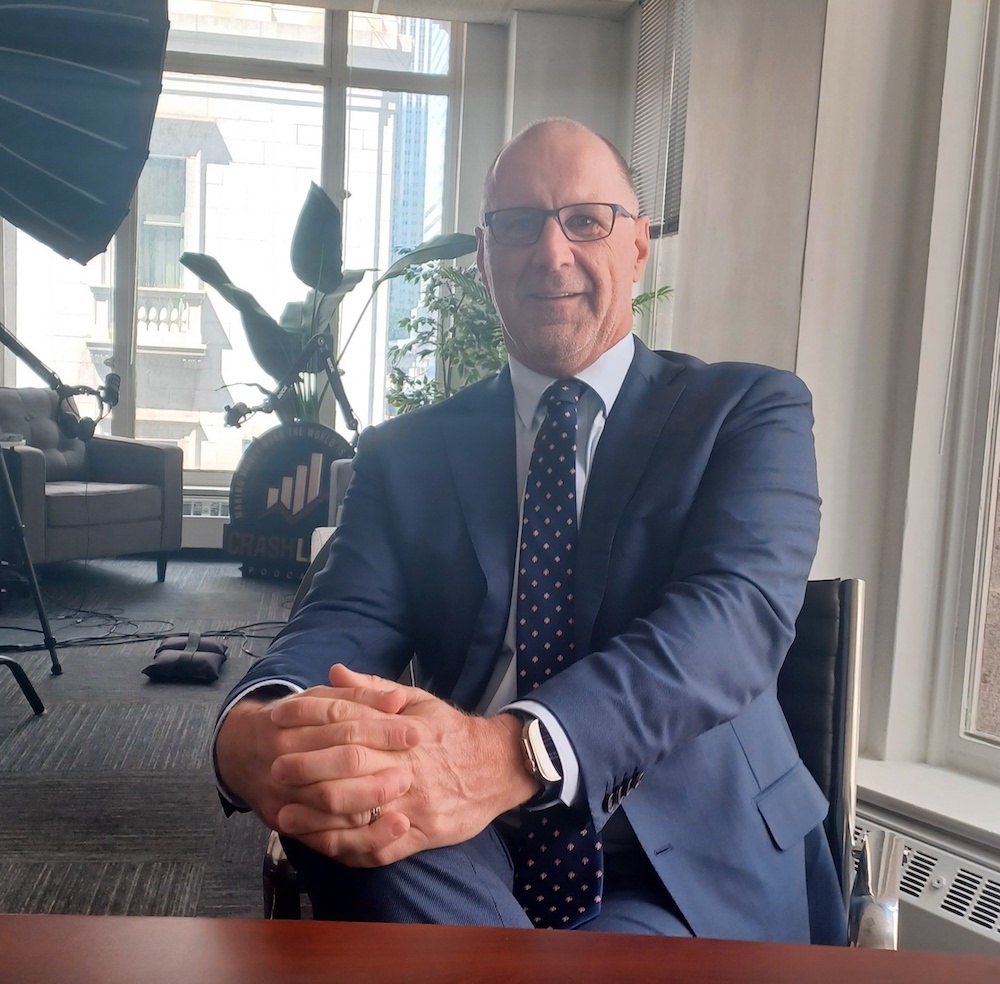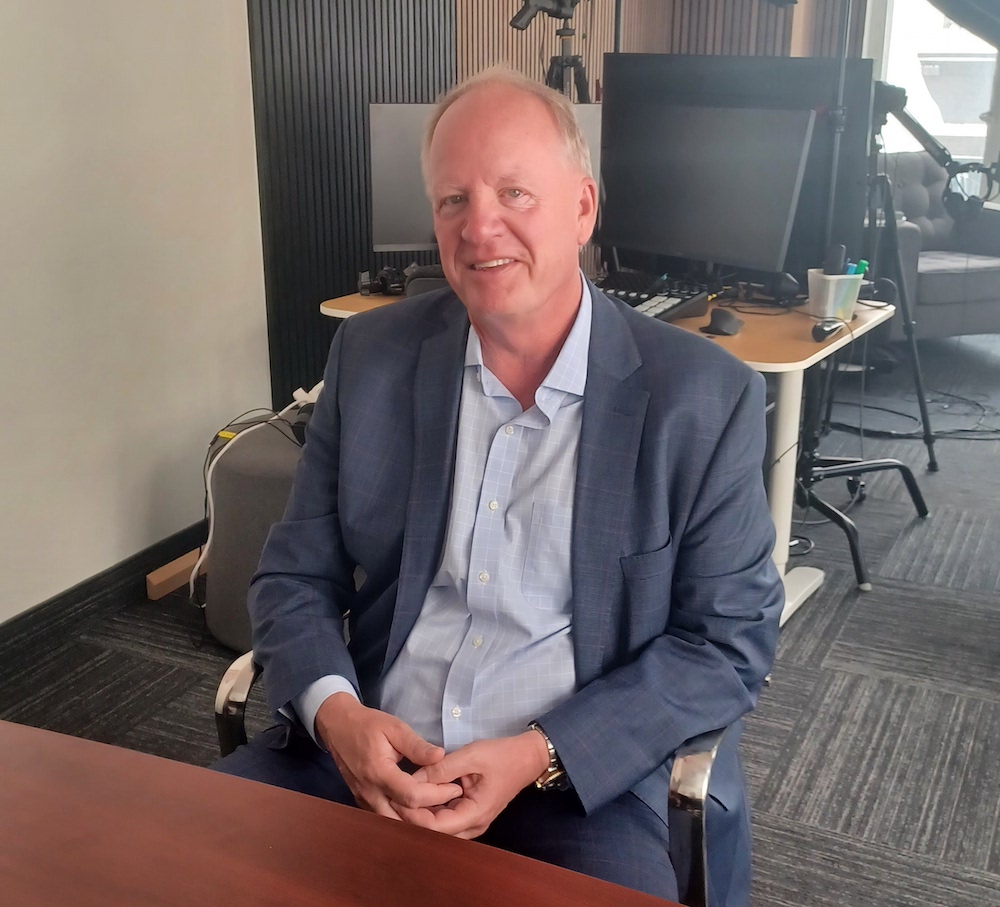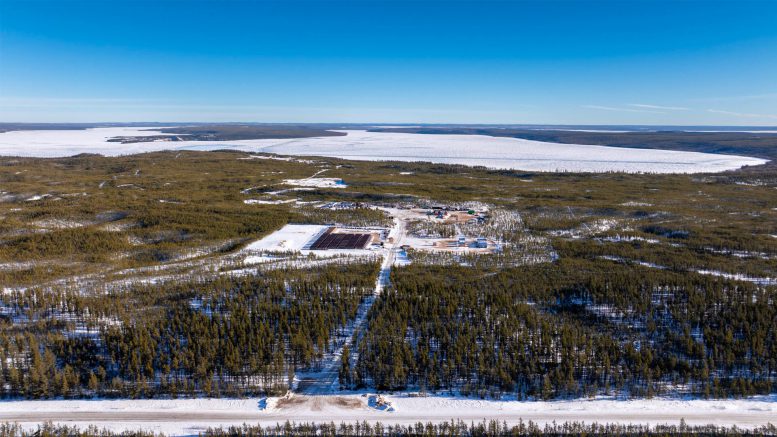Just months after rejoining the uranium producers’ club with the March restart of its Langer Heinrich mine in Namibia, Paladin Energy (ASX: PDN; US-OTC: PALAF) has set its sights on a second mine that could catapult it to one of the world’s largest uranium producers.
In late June, the Australian miner launched a friendly, $1.1-billion bid for Fission Uranium (TSX: FCU; US-OTC: FCUUF) and its high-grade Patterson Lake South development project in Saskatchewan. The acquisition comes as a strong push for nuclear power around the world runs into the reality of more than a decade of underinvestment in new uranium supply.
“There’s a shortage of primary production coming out of the ground today and into the future,” Paladin CEO Ian Purdy said during a mid-July visit to Toronto.
“We’ve seen very strong demand for our Langer Heinrich product. And we expect that when we’re ready to bring our customers to underpin PLS later this decade, that demand (will) be extremely strong.”
Paladin expects the merger to lift it to the third largest listed uranium miner in the world, with production potential of 15 million lb. uranium oxide (U3O8) annually by the end of the decade.
Premium, but no cash
The all-share deal doesn’t give Fission shareholders a cash payout. Paladin has only just started to receive cash flow from Langer Heinrich, idled in 2018 due to low uranium prices, and which cost US$125 million to restart. The mine is expected to produce 4 million lb. U3O8 this year, and up to 6 million lb. annually at peak capacity.
But Paladin’s offer for Fission, valued at $1.30 per share, does represent a 25.8% premium to the junior’s closing share price before the deal was announced. And it will give Fission shareholders immediate access to cash flow from Langer Heinrich while PLS moves through permitting and construction with first production anticipated in 2029.

Paladin Energy CEO Ian Purdy in Toronto in July. Credit: Alisha Hiyate
“We will have significant cash flows out of Langer Heinrich over the forthcoming years as well as being a larger company with deep relationships with debt providers,” he said. “We’ve got the largest customers in the world supporting us at the Langer Heinrich mine. So we have the firepower and the optionality to comfortably fund this project when it’s ready.”
The PLS mine is expected to produce 9.1 million lb. U3O8 per year over a 10-year life.
The deal will require support from two-thirds of Fission shareholders. They’ll hold just under one-quarter of the combined company’s shares, which will be re-listed on the TSX.
Fission CEO Ross McElroy, who shared The Northern Miner’s Mining Person of the Year award in 2013 for the PLS discovery, will continue to shepherd the project as leader of Paladin’s Canadian operations.
“It isn’t us selling the company. It’s us combining the companies together and that keeps us heavily involved,” he said.
“We’re backing Ross and his team to deliver this project,” Purdy added. “They’ve done exceptional feasibility work of the highest quality and we look forward to moving the project forward to production with Ross leading the process.”

Fission Uranium president and CEO Ross McElroy in Toronto. Credit: Alisha Hiyate
The “world class” PLS project, with a reserve grade of 1.41% U3O8, is expected to be among the lowest cost uranium producers globally with operating costs of US$13.02 per lb. U3O8. That compares with Langer Heinrich’s mid-range costs of around US$28 per lb. expected once ramped up next year. The larger-tonnage open pit mine has a 17-year life and a head grade of around 0.08% or 800 parts per million U3O8.
Under pressure
Strong uranium demand coupled with a tight market pushed uranium spot prices to 17-year highs over US$100 per lb. U3O8 earlier this year. They’re now at under US$85 per lb. — still up dramatically from around the US$30 mark in mid-2021. World Nuclear Association figures released last year projected demand will rise 28% by 2030, then 51% over the following decade.
Customers for nuclear fuel also face new geopolitical and practical obstacles in sourcing supply as the market has been split along Russian-friendly jurisdictions on one hand and Western-friendly jurisdictions on the other.
“The complexity of contracting and receiving pounds in the Western market is getting more complex and harder,” Purdy said.
Factors like the United States ban on Russian uranium and Niger’s military government suddenly revoking Orano’s permits for its Imouraren mine in June, have disrupted European supply. Producers in Kazakhstan, which in July announced increases in its mining tax on uranium starting next year, have warned shortages in sulphuric acid could mean lower production for the next two years.
“The uranium market is very tight at the moment. What that means is every small change in the status of supply globally has significant relevance to the market,” Purdy said.
He expects the market to remain tight for “years to come.”
Critical question
While the Fission deal will have to go through an Investment Canada Act review at a time when the federal government has been tightening up rules about foreign acquisitions of critical minerals projects and companies, Purdy doesn’t expect any snags.
“We’re very comfortable with the process here in Canada,” Purdy said, adding it’s similar to Australia’s. He noted that meetings with the federal government in mid-July went well.
The deal has already been approved under the Canadian Competition Act.
Purdy said that government discussions have focused more on ownership of projects than who will buy the end product. The federal government has targeted Chinese investment in Canadian critical minerals companies, but the country is a large and growing customer for nuclear fuel. Paladin has offtake deals with customers in China as well as Europe and the U.S., and a subsidiary of China National Nuclear Corp. holds a 25% interest in Langer Heinrich.
A selling point for the Paladin-Fission deal for Ottawa is that it will dilute Chinese ownership in the junior. CGN Mining, which is controlled by Chinese state-owned enterprise (SOE) China General Nuclear Power Corp., currently holds a 12% stake and a seat on the board.
“Under the mechanics of this acquisition by Paladin Energy, the ownership of the SOE is diluted to a minimal amount and the board seat will fall away,” Purdy said.
CGN’s stake has already been diluted from 19.99% in 2016. It will still have an offtake for uranium production from the mine, but that will also be diluted as it includes thresholds for equity ownership.
McElroy says CGN has always been supportive of the project and management, and the merger will bring a mine at PLS closer to being realized.
“I think what’s important to them is to see that the project will get it built,” McElroy says.
“China has an insatiable appetite for nuclear fuel, so from that perspective, this certainly derisks the project.”


Be the first to comment on "Fission deal key to Paladin Energy’s plan to help plug uranium supply gap"